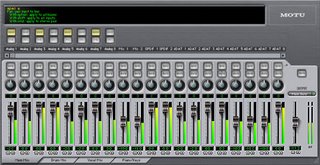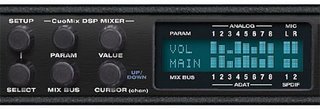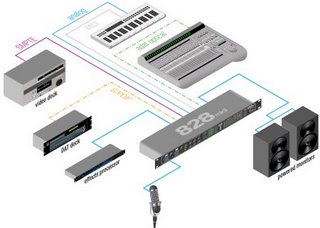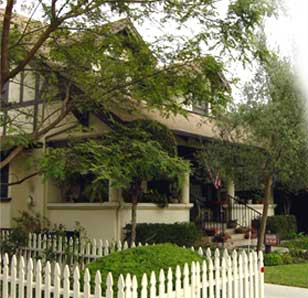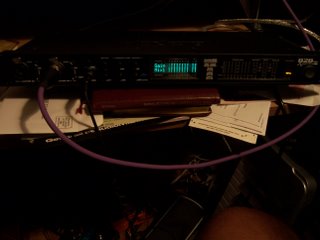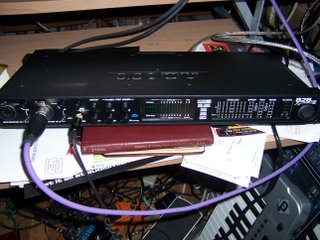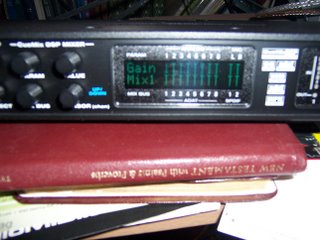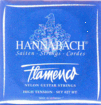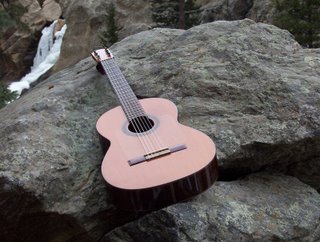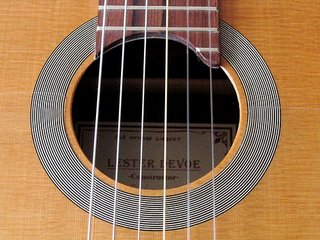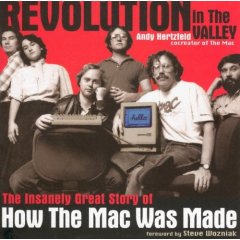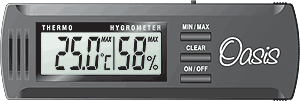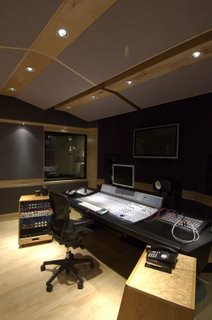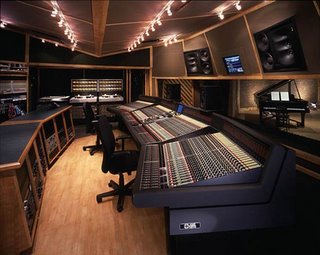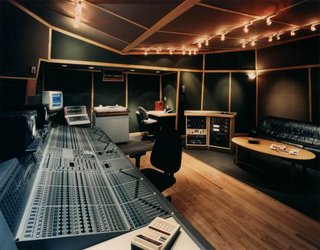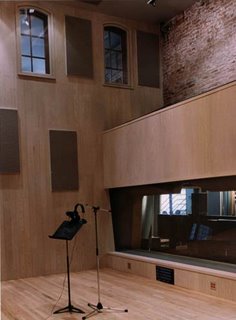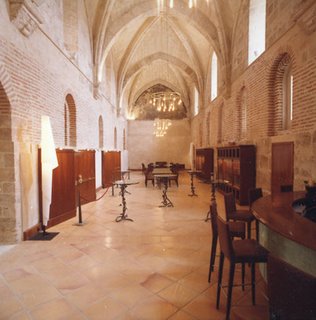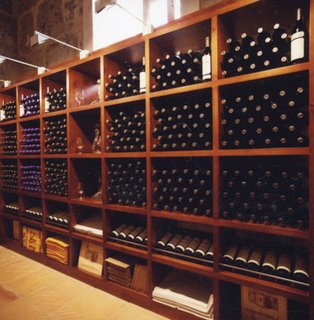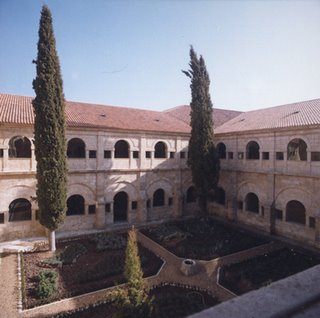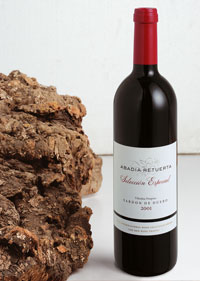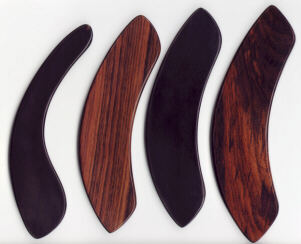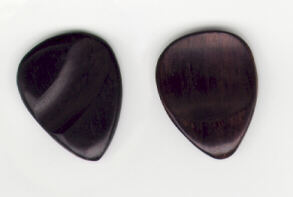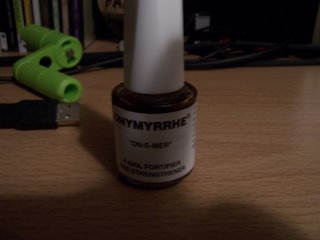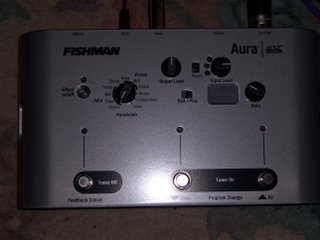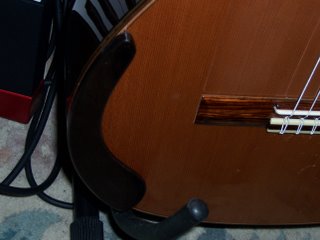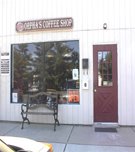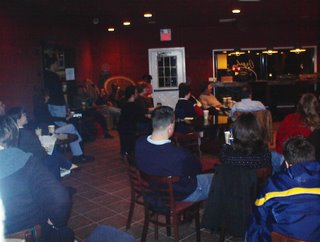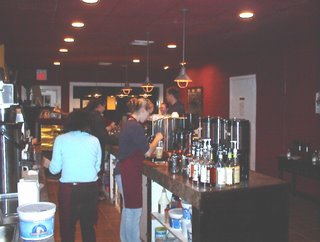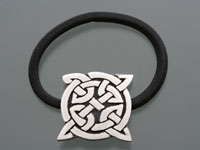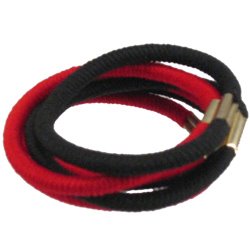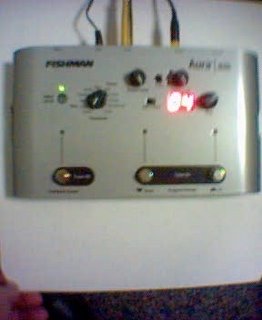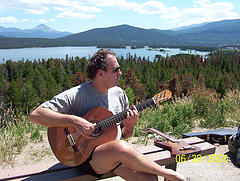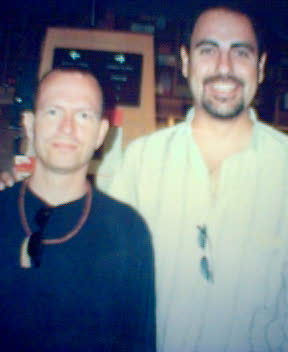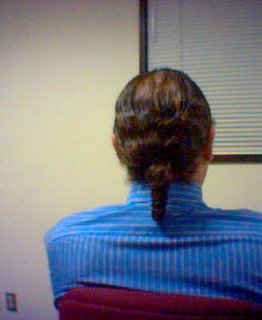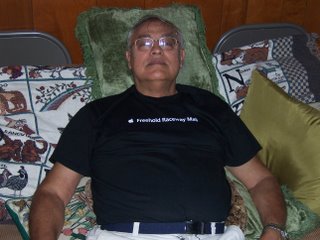In the late 1930s and early 1940s in the countries now called the Republic of Congo (capital Brazzaville) and the Democratic Republic of the Congo (capital Kinshasa), a sonic revolution took place that heralded the political revolution and ousting of colonial occupation in 1960. In the decades approaching independence, musicians created a music uniquely Congolese and fostered a radically different social-consciousness. This national music was not founded solely on Congolese musical forms, however; it "localized" foreign musical genres, especially from Cuba and other Caribbean countries. Yet, the Latin American styles imported into the Congos were not entirely foreign to them. The rumba and son montuno, for example, were founded to varying degrees on musical traditions transported from the Congo region across the Atlantic with the slaves. Twentieth century Congolese interest in musical styles from the Americas and Europe and their subsequent, selective re-indigenization created a new medium of artistic expression. This medium, together with the continual use of active, local music traditions, made audible the emergence of a reconceptualized nation. Embedded within the songs of this new genre, called Rumba Lingala, are blueprints to the construction of a new national identity. The construction of this identity played a central and crucial, albeit indirect, role in the successful struggle to overthrow the colonial government.
This article examines part of the history of Rumba Lingala, a style that emerged in the urban centers of the Belgian Congo and the French Middle Congo. The style's name is derived from musicians' passion for and assimilation of various Latin American styles, fascination with "rumba" as a musical, social and cultural complex, and the practice of singing in Lingala. The development of Rumba Lingala proceeded through several successive stages, all of which involved the fusion of diverse local and imported styles. Seen from afar, the greater politico-artistic process involved both inclusion and exclusion; a close listening to the soundscape may reveal the changing degrees of assimilation and rejection of different styles, and allow a theorization of the power differential between the competing voices.
Rumba Lingala is also the product of a complex of encounters and negotiations between music traditions, and of the cycle of repetition, revival and radical departure, an early and documented example of the phenomenon that has come to be named "world music." For this analysis I shall focus on the period 1948-1960 and examine Rumba Lingala as performed on the main record labels by its primary practitioners. I have chosen 1948 as a starting point, because the first recordings of Congolese music available today were made that year. My analysis ends in 1960 with independence, a sea-change in almost all arenas of life that effected qualitative changes in musical production. [1]
Contesting colonial authority through song was was not, generally, the musicians' project, and Rumba Lingala cannot be considered revolutionary music in the same way as, for example, Chimurenga in Rhodesia in the 1970s. In the two decades prior to independence, however, Rumba Lingala, with the efflorescence of radio, record players, and recording technology, altered Congolese ideology by encouraging an expanded understanding of community along national rather than ethnic lines. In doing so against the backdrop of political unrest throughout the colonial world, it energized the minds and bodies of the Kuba, Luba, Kongo, Tetela, etc. and stimulated a feeling of community and shared destiny. Pius Ngandu Nkashama points language's role in arousing this sentiment:
In so far as these songs are performed almost exclusively in the four principal languages established as national languages ( Lingala of the capital Kinshasa, but also Kiswahili spoken all over the east, Ciluba in the center, and Kikongo in the south) for an immense country with more than 350 different languages, the song should be considered like a privileged space where an historic conscience is affirmed. [2]
I am interested in analyzing the Rumba Lingala song as a site where social crisis is voiced and collective redemption is sought, in dialogue with the "historical conscience." Listening with open ears and mind may reveal how Rumba Lingala songs "wrote" the Congolese nation. As an example of musical production at the height of colonial oppression this music may contribute to an analysis of music's socio-political potential in today's "post"-colonial world.
* * * * *
Thanks to 78s and the wind-up Edison, the 1930s heard the sounds of Cuban bands like Orquesta Aragon, Septeto Habanero and Septeto Nacional on both sides of the Congo River. [3] These and other steps became popular in the decades that followed: Dominican merengue, Haitian mering, Martinican beguine, Argentinean tango, Brazilian samba, and the Cuban cha-cha, bolero, and mambo. But the forms of Latin music that cut the widest swathe in the Congos were the Cuban son montuno and rumba, the latter being the rhythm most heavily influenced by African rhythms. [4]
Rumba Lingala emerged in the 1940s in the cities of Boma and Matadi in the Lower Congo region, and in Léopoldville and Brazzaville in the Stanley Pool region. The signal features of Rumba Lingala were the integration of Latin musical themes and the rise of a new type of dance band that supplanted earlier traditions. [5] The rumba's appearance at the 1932 Chicago World Fair and concerts in New York by Machito and his Afrocubans, Orquesta Broadway and Johnny Pacheco made the rumba (its ballroom version, anyway) fashionable and respectable as an exotic music to Europeans. This music reached the Congos on records and in person when the colonial governments hired Cuban bands to entertain the colonial officers. Perhaps it was the African influence in the rumba that made it initially popular among the Congolese. Cuba and the Congos were anything but two "fully formed and mutually exclusive cultural communities" colliding. [6] The rumba itself sprang from the mixture of the folk musics of the Spanish slavers and the African captives brought to Cuba, seventy percent of whom were from the Congo River basin. [7]
In the Congos the name "rumba" seems to have been applied to any music with a clavé beat, even if it more closely resembled another rhythm. A reinterpretation of the name thus accompanied the assimilation of the music. Rumba Lingala's signature rhythm, according to my analysis, is a duple meter with a clavé beat most similar to that of Cuban son (itself similar to 12/8 bell patterns found in many parts of West and Central Africa) . It is articulated by percussion, guitar, horn, or organ. As I hear the clavé, the rest between the grouping of three and the grouping of two gives a feeling of a dragging, holding, then catching up. Variations in the Rumba Lingala rhythmic foundation include the reversing of the 3-2 groupings, and the infusion of a march-like squareness into the clavé. The latter nonetheless preserved the sliding, dragging feeling, which the right foot outlines at the top of the square in couples' version of Cuban rumba. The bass guitar emphasized the clavé beat and provided the harmonic framework, typically a I-(IV)-V-I progression.
On the earliest recordings named "rumbas," compositions were played on two guitars and, often, a bottle with a knife. One guitarist would strum the rhythm and harmonic changes, while the other picked out the chords to support the voice that carried the melody. Not long after the Ngoma label began recording in 1948, bands began to fill out. Some of the early line-ups included: three guitars, clarinet, and "jazz," the name given to the scraper (Manuel d'Oliveira et les San Salvador, 1952); three guitars, bass, maracas and claves (Wendo, 1956); one guitar, bass, two clarinets, trumpet, maracas, "jazz" (Léon Bukasa, 1957). A publicity photo of the Ngoma house band, the Beguen Band, from around 1955 shows the group with banjo, upright bass, trumpet, euphonium, alto and tenor saxes, and drum kit (including snare, two tenors and kick drum, and sock and ride cymbals). A similar photo from around 1959 shows two hollow-bodied, amplified guitars, upright bass, trumpet, alto sax, possibly clarinet, "jazz," bongos, and maracas. Most of the songs also included a "tam-tam," most likely a single-headed, cylindrical drum. By the end of the decade, big bands, called "orchestres," had become the preferred format, using acoustic string bass, multiple electric guitars, conga drums, maracas, scraper, flute or clarinet, saxophones, and trumpet. Beginning in 1952, the bass, which may have been introduced by visiting European musicians, [8] assumed the role of providing the harmonic foundation, previously the work of the second guitar; the latter took to interacting polyrhythmically with the lead guitar, and strumming as a technique virtually disappeared.
The guitars were tuned D-G-D-G-B-D, called the "Hawaiian" open tuning. Musicians used a capo to change keys, and vibrations of the open strings against it produced a highly desirable buzzing effect. [9] Listening to early recordings today, the listener would likely note the following characteristics: Most singing is syllabic, with melismatic inflections at the end of lines, many of which use a rhetorical call of "mamá, é." The harmonies are usually thirds, though Congolese music scholar Kazadi wa Mukuna notes the occasional octave or fifth, used for special effect. [10] Three types of call and response recur: between singer and chorus; between singer and instrument; and between instruments of different sections. Pieces exhibit a combination of homophony and polyrhythm. Melodic interest is concentrated in a single part with subordinate accompaniment, but rhythmic texture is denser and more differentiated across the various instruments. Horns often punctuate, interspersing with vocal lines, rather than carry the melodic line, except when used antiphonally with the lead singer or chorus. Improvisation generally consists of variations of a motif, often involving a third. (The lead guitarist of African Jazz, Dr. Nico, played in higher registers and often improvised by moving up and down the scale step-wise through arpeggios on a single string or parallel third movement on two. Franco of O.K. Jazz preferred intervals of thirds and sixths on the mid-range strings, and his improvisations, which especially in later years featured variations on a series of repeated riffs, exploited the guitar's rhythmic capabilities. In his hands it became a voice conversing with other instruments in the percussion section.) The songs typically remain in a single key throughout, and few change tempo.
Rumba Lingala songs were by and large composed with multiple sections. The first was an introduction, in which typically everyone sang and played. The second section was often a sort of solo portion, called the sebene , which in some ways resembled the montuno portion of the Cuban son montuno form. [11] During the sebene the dancers would try out new steps. Listeners familiar with Congolese music today would hear in early recordings something familiar: throughout songs, especially during the sebene, musicians shout slogans. They often refer to the particular rhythm and dance of the song. As the sebene developed , the special role of the animateur was created, whose job it was to incite the dancers with cries of "Kwassa kwassa!" (from the French "quoi ça?") "Kiri kiri!", "Moto!", "Zekete zekete!", etc., often designating the appropriate dance. During the early years, shouted slogans were signatures of a sort. For example, Edo Nganga of O.K. Jazz was known to shout "Baila!", Landot Rossignol, also of O.K. Jazz, "Caramba!", Joseph Kabasele, the leader of African Jazz, the era's biggest band, "Chauffez!", and Henri Bowane "Krr . . . wamoluka landa bango!" ("Krr . . . searchers, follow them!"). [12]
I hear the adherence to a single tonality, the preference for close harmonies, and the use of call and response as a desire for unity. Expressions of agreement are privileged over those of dissent, those of harmony over those of dissonance, of inclusion over exclusion. The characteristic sweetness of Rumba Lingala, even of Congolese music up to the present, achieved by singing in upper registers and falsettos, the rounded timbre of the amplified guitars, the tight harmonies and the limited improvisation, eschews conflict, encourages agreement. Musicians combined local musical characteristics, such as singing in thirds, polyrhythm and homophony, and foreign elements, such as instrumentation, harmonic progression and singing in Spanish and French, in order to syncretize the dissonant environments and resolve the existential tension of the two colliding world systems. The syncretism of the early Rumba Lingala era signals to me both a nostalgia for the familiarity of a prior time and an excitement for the less knowable present and future. Musicians and dancers sought to make a space where everyone could create, participate and identify. The sebene is the time for musicians to demonstrate their dexterity with the world around them and their role as its co-creators. It is the time to celebrate the new identity in the company of the group, for dancers to show that they belong. The animateur , soon a de rigueur member of Rumba Lingala bands, encouraged group identification by inciting dancers to join in, facilitating the collective process by enthusiastically shouting coded instructions as to how to dance. If later bands can offer clues as to the performance practices during the Rumba Lingala era, the musicians also danced, making even plainer the "steps to belonging."
Another characteristic of Rumba Lingala is the high degree of repetition in compositions. Short phrases in horn, guitar, percussion and vocal parts are repeated many times. As technological advances enabled longer recordings, repetition increased. This feature lends itself well to dancing, as a stable base is needed to work the choreography and is characteristic of many of the rural music traditions in the Congos. I hear more than the simple transfer of a musical practice, however: Repetition can be a form of hyperbole. Motifs, introduced then repeated with variations, building and amassing significance, express on the surface musical tendencies, and below the surface ideological tendencies. The exaggeration of repetition is what Max Paddison calls a "stylistic device employed to highlight these tendencies and bring them vividly into consciousness." [13] As repetition (either within a single song, or between songs of a single style) entices dancers out onto the dance floor, it is a call to the group, for members to swell and solidify its ranks. Heard in the context of the political oppression of the period, it is an effort to wear down the opposition, erode the system, break free of colonialism.
The rubric Rumba Lingala was inclusive, for most musicians of the Rumba Lingala era played variations on several different Latin rhythms, responding to the changing times by incorporating new rhythms and dances into their repertoire. For example, the cha-cha became quite popular towards the end of the 1950s, prompting Wendo to re-record his 1948 hit "Marie-Louise" in 1958 as a cha-cha backed by the Beguen Band. [14] Collections of recordings from the late 1940s through 1960 show bands performing rumbas, boleros, cha-chas, merengues, polka piqués, biguines [15] and a variety of others. Some recordings called "rumbas" by the record labels exhibit other rhythms; Kazadi suggests that studios labeled songs "rumbas" because of the word's commercial appeal. [16] Each rhythm had its specific use: the cha-cha was the preferred form for treating joyous or celebratory subjects [17], the merengue for light entertainment, and the bolero for songs of elegy. The "rumba," however, predominated; it was an all-purpose rhythm, often used for stories of love, as well as social messages.
Early Rumba Lingala works were sometimes covers of Latin classics, such as the son-pregón "El Manisero," an early staple of the new bands. Bokalanga's rumba "Mazole Vanga Sanga," recorded on Loningisa 1953-1954, begins with "Mani-i-i-i-i-i-i-i-i-i-i-i," a quote from the famous original. [18] When not in Lingala, the lyrics of early cha-chas, boleros, pachangas and merengues were sung in French, English, or pidgin Spanish, copied from the recordings. Occasionally, singers playfully mixed languages. Even in original compositions singers would often insert Spanish. In an interview with Kazadi wa Mukuna, Franco of Le Tout Puissant O.K. Jazz said, "Well, nobody understood Spanish. Nevertheless, we took a dictionary and searched for words that would sound good and we used them regardless of their true meaning." [19] "Maria Antonia," recorded by Pholidor and Bana Loningisa 1955-56, called a "Rumba Española" by the label, is sung in an untranslatable "Spangala." [20] The use of Spanish diminished in the late 1950s and early 1960s.
Comhaire-Sylvain offers an "ear-witness" account of the early days of Rumba Lingala:
"Many recordings were being sold in Kinshasa in 1945. Those with success were dance music. Contrary to Spirituals which were not being sold, American jazz tunes were very much appreciated and often imitated by Congolese bands. Local composers sometimes adapted Lingala words to tunes which were enjoyed the most by the population. South American and Afro-Cuban music were also popular and several Congolese singers adorned their own works with Spanish words." [21]
One can infer the importance of linguistic play, as bands both familiarized the other and exoticized the familiar. The song "Ménagère," recorded by Pauline Lisanga's ensemble 1953-1954, [22] shows an astute awareness of the contrasting significance of different rhythms. The title is a term borrowed from French (meaning "housewife") and used in the Congo to designate a European man's African mistress. Loningisa called it a "polka piké." The song begins with a polka piqué, one of the favorite rhythms of the early 1950s in the villes indigènes , played on guitar, accordion, snare with cymbal, saxophone and possibly kazoo. A third of the way into the 2:51 song, everything but the snare and accordion drops out. With a shout of "Tango! Recommended by doctors!" a slow tango ensues. [23] The word used for "doctors" is polyvalent: Banganga may refer to both European-trained physicians and traditional healers. The tango was at that time in vogue among the Europeans and immatriculés , a class of privileged Congolese with identification cards and the freedom to drink alcohol and stay out after the nine-o'clock curfew. [24] I read this as the band's testament that their music heals, and theirs is good for everyone: whether they are the type to visit just one kind of doctor or both, as would many Congolese, especially if the European treatment did not have the desired effect. The dose of tango is small -- just about a minute. The polka piqué then resumes. This song shows more clearly than most the phase of musical transition between European- and Latin-oriented sounds. It reveals the playful ambiguity of identity in living between two worlds, African and European. It also speaks to a belief in music's ability to heal.
The first band in either of the Congos to play Latin American music was Orchestre Congo-Rumba, started in 1934 in Brazzaville by Jean Réal, a French man from Martinique. [25] Ensembles followed the "Haitian model" of guitar, cornet, sax, patenge (a square frame drum) and two singers. [26] The first African-led bands to incorporate rumba [27] into their repertoire were established in 1942: In Léopoldville, Américain, Martinique, Odeon and Victoria Léo; in Brazzaville, Melo-Congo and Victoria Brazza. [28] Other groups from the mid-1940s include the Congo Bar's house band Kin Jazz and Jean Lopongo's Mabokoji Group. These bands, along with Excelsior, are regarded as the first orchestres , or dance bands. Typically these ensembles played for mourning ceremonies, births, baptisms, family parties, marriages, and for popular amusement. [29] The Congolese music scholar Lonoh Malangi Bokelenge tells us that before the arrival of Europeans to the Congo, dance bands such as these did not exist; local musical organizations were the norm. [30] The newly structured ensembles sometimes changed their names to reflect their "modernization." L'Harmonie Kinoise, for instance, became La Joie Kinoise in 1949. La Joie Kinoise, under the leadership of singer, interpreter and composer Joseph Kabasele Tshamala, changed its name again to African Jazz for its first official appearance in Kinshasa in 1953. [31] Musicians also Latinized their names to demonstrate their "hipness." François and Francis became "Franco," Edward "Edo," Nicolas "Nico," and Balozi "Baroza." [32]
As in their approach to the new urban music genres, instrumentation and their own stage names, musicians were fond of using foreign elements in their bands' names. Some examples are Orchestre Machina Loca [33], Beguen Band, San Salvador, Likembes Geantes, Novelty, and African Soul Quintet. The term "jazz" occurred frequently in bands' names. It did not signify that the band played jazz music; instead, it was a symbol of modernity. Some examples are African Jazz, O.K. Jazz, Kin Jazz, Dynamic Jazz, Vedette Jazz, Negro Jazz, Mysterieux Jazz, Ry-Co Jazz, Mexico Jazz, Congo Jazz, Bantous Jazz, Cercul Jazz, O.D. Jazz, Jazz Vénus, Jazz Beguen, and Jazz Mango. Musicians' propensity to use "jazz" in their bands' names and the use of the moniker to designate the scraper, or mkwakwa , may have stemmed from positive impressions of African-American soldiers stationed in Congolese cities. [34] Certainly, Congolese musicians were aware of American jazz; Louis Armstrong's visit to Kinshasa, where he gave a public concert, was much fêted. He was transported to the stadium like a chief, in a chair carried by porters and preceded by dancers and musicians. [35] Why musicians were not drawn to more closely imitate American jazz is a question that was asked even in 1950. Jean Welle, a writer for the periodical Congopresse , wrote:
"I have never heard Congolese musicians play jazz -- I mean true jazz, in the manner of the North Americans. I have been told when they listen to records from across the Atlantic they react with indifference. As regards their dancing, they are fond of the sounds from a pick-up [a turntable], that is, romantic recordings, and slow-fox or slow waltz melodies. . . .
"But if the blacks of Harlem surrender to the rolling of nickel-plated drums, to the frenetic dances whose names evoke the ancestral jungle -- their brothers in the Congo, when they are not dancing the rumba to the sounds of their dance bands, they would prefer without hesitation the tender voice of Tino Rossi to the trumpet of Louis Armstrong." [36]
The contrast between his observation that jazz tunes were met with "indifference" and Comhaire-Sylvain's that "jazz tunes were very much appreciated" from five years earlier indicates a significant change in taste during the period that Rumba Lingala was coalescing as a style and beginning to be heard widely on radios, as well as a few turntables [Images of Technology]. The writer's observations of Congolese listening and dancing habits in 1950 are interesting; I interpret the semiotic and aesthetic choices of resignifying the word "jazz," to designate something non-musical, as a desire to maintain contact with a group of people (Americans, or perhaps black Americans specifically) who the Congolese perceived to be living as they wanted to; as an effort to appropriate the power that the Congolese themselves projected onto them; and a desire to affiliate with, to belong in spirit to, a world non-European, non-colonial. The juxtaposition of local and foreign words in ensembles' names signaled a looking inward and outward, part of the syncretizing effort to create a "third space" - a "best of both worlds" place they as the forgers of a new nation in a modern world could own.
The appropriation of the label "jazz" parallels that of the label "rumba." Both appellations issued from a people seething under oppression. Cuban rumba and American jazz were practiced primarily by the sectors of society most marginalized. Race, another face of the cultural Black Atlantic, was a factor in the ruling parties' economic and political policies in all three regions (the Congos, Cuba, U.S.A.). "Jazz" and "rumba" signified artistic statements of self-esteem and group identification from Afro-Cubans and African-Americans and, as such, were strong symbols from peoples with a shared history. Connecting -- indeed identifying -- with those across the Atlantic through "rumba" and "jazz" enlarged the Congolese world. Furthermore, "jazz" connoted resistance, virility and power over oppression, as shown by the following excerpt from the poem "Pleure, O Noir Frère Bien-Aimé" ("Weep, O Beloved Black Brother"). The poem was written eight months before independence by Patrice Lumumba, the leader of the pan-Congolese party Mouvement National Congolais and the first prime minister of the independent DRC, who was later assassinated in a CIA-backed plot in February 1961. [37]
